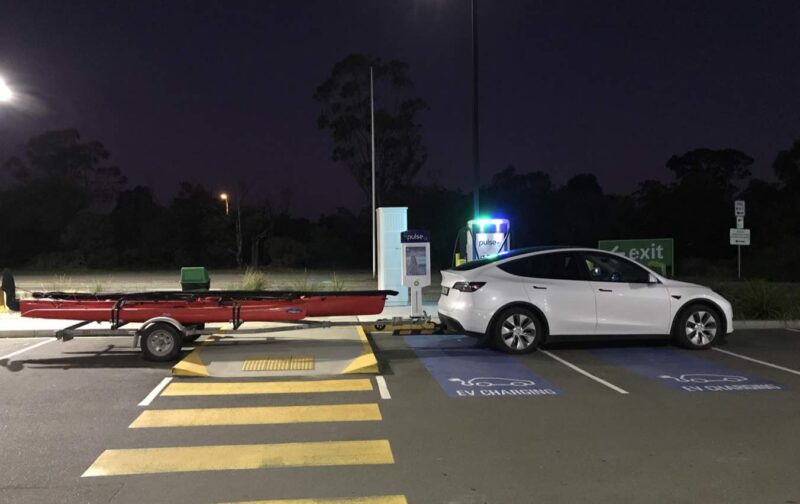Australian state and federal governments have decided to crack down on reliability issues in the country’s EV fast charging network, imposing a new standard that will require all state-funded installations to be working at least 98 per cent of the time.
The new uptime standard will be imposed from January next year, and will be introduced with other new requirements such as the provision of multiple ports, the switch to a common payment system, as well as a better balance between CCS and the now rarely used ChadeMo plugs.
The 98 per cent uptime standard will be welcome news for EV drivers, who have been plagued by sometimes unreliable charging infrastructure, and extended downtime on parts of the network that have proved problematic, particularly for those travelling long distances away from home.
See: Another sorry tale of broken EV chargers and unrealistic range expectations
State and federal governments are funnelling hundreds of millions of dollars to support the rollout of fast charging infrastructure across the country, filling in the gaps between major population centres.
The 98 per cent requirement is actually less than the newly imposed 99 per cent bar set by the UK government, but more than the 97 per cent targeted uptime in the US, which has also had problems with its fast-charging infrastructure, recently noting that more than 4,000 fast charging stations were not operating.
In Australia there has been little information on the uptime of fast-chargers, although the biggest non-Tesla provider in Australia, the Brisbane-based Tritium, recently boasted of achieving 98 per cent uptake in a UK network, and 97 per cent on the Evie Network in Australia.
But it indicated that previously uptime had been much lower, particularly with its earlier models.
Tritium is currently struggling under the weight of heavy losses and a massive slump in its share price, which has threatened its status on the Nasdaq stock exchange and also crimped its ability to raise new capital. It has decided to close down its Brisbane-based manufacturing facility to focus on its US operations.
“As part of the National Electric Vehicle Strategy, the Albanese Government is working with states and territories on national consistency to give Australians greater access to charging infrastructure for cleaner, cheaper to run cars,” a spokesperson for federal energy minister Chris Bowen said in a statement.
“This includes collaborating on payment methods, accessibility, and universal chargers so that EV drivers can access a convenient, affordable, and equitable national charging network.
“Minimum operating standards will help simplify administration, address range anxiety and send a strong signal to Charge Point Operators on baseline requirements.”
Other changes will include a requirement that each site receiving government funds should have at least two DC charging units with at least two plugs/ports each. At least one bay per site needs to meet disability accessible parking bay standards.
At least 70 per cent of each DC fast charging site must include Combined Charging System (CCS) Type 2 plug connectors (Chademo is now rarely used apart from Nissan Leafs), and each charging bay should have sufficient length and width to allow for larger EVs with front, side and rear charging points.
All charging stations with a capacity or more than 150kw, and in particular in regional locations, should include at least one ‘drive-through’/pull-through charging bay, allowing for bigger cars and those cars that are towing.
Existing projects and programs underway will not be required to retrospectively apply these standards, and all jurisdictions retain the right to vary requirements for unique sites where compliance is prohibitive or impractical.

Giles Parkinson is founder and editor of The Driven, and also edits and founded the Renew Economy and One Step Off The Grid web sites. He has been a journalist for nearly 40 years, is a former business and deputy editor of the Australian Financial Review, and owns a Tesla Model 3.

